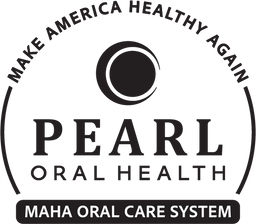Today’s commercial Holstein cows are bred to produce large amounts of milk. This processed milk contains high levels of growth hormone, engineered bovine growth hormone, and this pushes them to their “udder limits” of milk production. They are mostly fed genetically-modified grains, and they produce 3 times as much milk as old-fashioned cows. They live 42 months compared to about 12 years for grass-fed cows. Raw milk, by contrast, is very beneficial to your health.
Ultra-pasteurization is a violent process that takes milk from a cool temperature to above the boiling point in just a few seconds and kills every beneficial component in raw milk. Almost all of these components are completely inactivated by pasteurization, making pasteurized milk highly susceptible to contamination.
-The Lancet Journal, November 17, 1984
Homogenized Milk
Homogenized milk has also been linked to heart disease. Worst of all, consumers have been duped into believing that low-fat and skim milk products are good for them. Only by marketing low-fat and skim milk as health foods, can the modern dairy industry get rid of the excess poor quality reduced fat milk from modern high production herds.
Mr. Elkins statement, that the intrinsic properties of milk, including its pH and nutrient content, make it an excellent medium for the survival and growth of pathogenic bacteria, applies only to pasteurized milk, not raw milk.
Sources:
- Sally Fallon, WAPF Journal, pp, 243-245, Fall 2015
-Jerry Tennant, Healing is Voltage

Raw Milk's Long List of Benefits
- Type A versus Type B: The devil in the milk
- Lactoperoxidase: an enzyme that seeks out and destroys bad bacteria. It is found in all mammals secretions such as breast milk, tears, and saliva.
- Lactoferrin: this enzyme takes away iron from pathogenic bacteria and stimulates the immune system. It ensures complete assimilation of iron by the infant.
- Polysaccharides: these protect the gut wall and encourage the growth of good bacteria in the G.I. tract.
- Bio-active milk peptides: works well for insomnia
- Medium chain triglycerides: a very favorable type of fat that disrupts cellular walls in pathogenic bacteria
- Enzymes: which disrupt bacterial cell membrane’s.
- Antibodies: their purpose is to bind foreign microbes to prevent them from migrating outside the gut. This prevents LGS
- WB C’s: these produce antibodies against specific bacteria, for the life of the infant
- B- lymphocytes: cells that kill foreign microbes and send out messages to other parts of the immune system
- Macrophages: components that engulf foreign proteins in bacteria. These mop up foreign proteins that can cause auto-immunity.
- Neutrophils: these kill cells that are already infected and mobilize parts of immune system
- T- lymphocyte: these produce immune strengthening compounds, and multiply when harmful bacteria are present
- Lysosyme: these compounds digest bacterial cell walls
- hormones and growth factors, stimulate the maturation of colonocytes, thereby preventing LGS.
- Mucins: these proteins stick to harmful bacteria and viruses thereby preventing these organisms from attaching to the mucosal wall and causing disease. A very useful substance in restoring gut wall integrity.
- Oligosaccharides: special sugars to protect important compounds from being destroyed by stomach acid and enzymes. These also bind to bacteria and prevent them from sticking to the gut lining
- Vitamin B12 binding protein: this protein reduces the levels of vitamin B12 in the gut by binding to B- 12. This renders B- 12 inactive to harmful bacteria which are needed for growth. This protein also ensures complete assimilation of B12 by the infant.
- Bifidus factor: a complex of beneficial bacteria that promotes the growth of lactobacillum bifidus, a helpful bacterial component in the babies gut which helps crowd out pathogenic bacteria
- Glycospingolipids: these prevent intestinal distress
- CLA, conjugated linoleic acid, which has strong anticancer properties
- Fibronectin: this helps to repair damaged tissue in the gut by increasing the antimicrobial activity of macrophages
The Down Side of Milk Pasteurization
Pasteurization was instituted in the 1920s to combat TB, infant diarrhea, undulate fever, and other diseases caused by poor animal nutrition and dirty production methods. Infected water supplies were also a problem.
But times have changed and effective water treatment, stainless steel tanks, milking machines, refrigerated trucks and improved testing methods make pasteurization absolutely unnecessary for public protection.
Milk pasteurization promotes the following:
- colic in infants
- increased tooth decay
- arthritis
- heart disease
- osteoporosis
- behavioral problems in children
-Scientific American, December 1995
NOTE: Today powdered skim milk, a source of dangerous oxidized cholesterol and neurotoxic amino acids, is added to 1% and 2% milk. Skim milk is a dairy industry waste by-product. No one should use skim milk or margarine, EVER!
- Low-fat yogurts in sour creams contain muco-polysaccharide slime to give them body.
- Pale butter from hay -fed cows contains colorings to imitate vitamin -rich butter from grass-fed cows.
- Bioengineered enzymes are used in large-scale cheese production.
- The Weston A. Price Foundation
Read my article: Making Better Food Choices for Your Children
Life Rejuvenation Systems | All Rights Reserved | www.DrLokensgard.com


